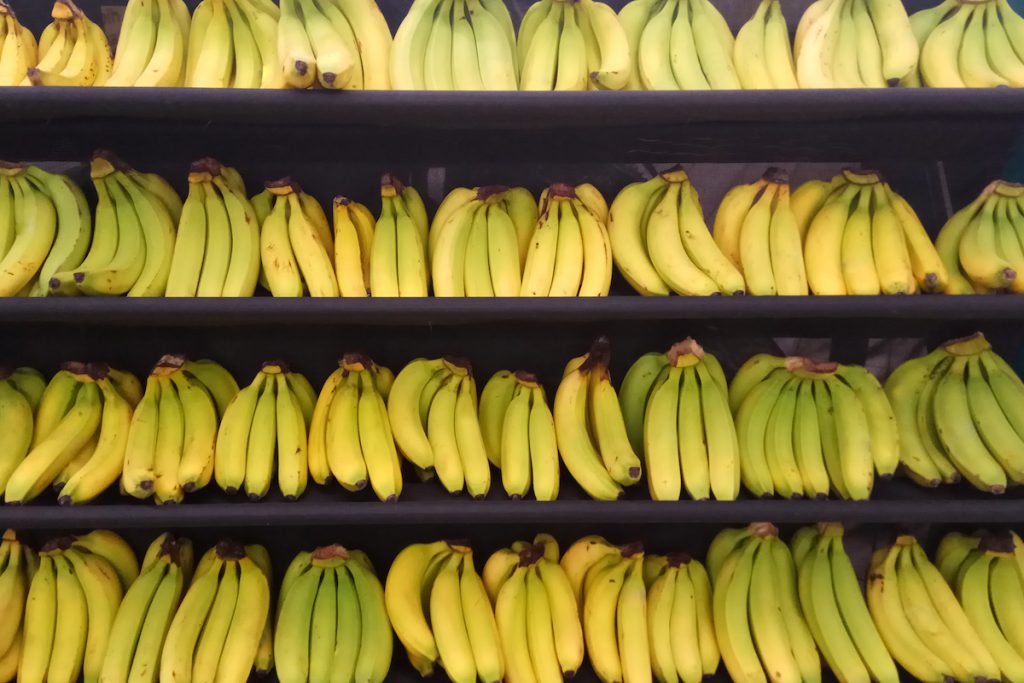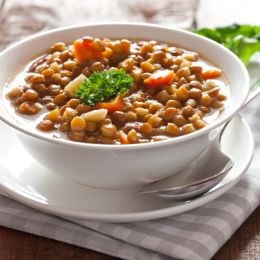6 Surprising Foods That Can Spike Blood Sugar
Even healthful foods can set off a major blood sugar spike. Here are some common culprits that people living with diabetes should know about.

Living with diabetes requires you to become something of an expert on nutrition, since knowing how different foods affect your blood sugar levels is a crucial part of staying healthy.
Typically, the best way to do that is to test your blood sugar before and after eating. That helps you find out which foods — or food combinations — work best with your goals and which don’t, says Erin Palinski-Wade, C.D.E., a New Jersey–based registered dietitian and author of 2 Day Diabetes Diet.
Sometimes it’s easy to predict which foods will send your blood sugar levels soaring — things like doughnuts, candy, or fruit juice, for instance. But other times you may be surprised, says T’ara Smith, M.S., a diabetes care specialist and senior project manager at Beyond Type 2.
Another thing that might surprise you: You don’t always have to avoid foods that make your blood sugar spike, Smith says. “It just takes making adjustments to make those foods work for you.”
This might mean limiting your portions, switching to unsweetened versions, or combining certain foods with others that are higher in fiber, protein, and healthy fats, which will reduce how quickly your body processes them and help level out your blood sugar.
Here, experts share six unexpected foods and drinks that tend to spike blood sugar levels — and how to tweak your approach to keep things stable.
1. Bananas
“Bananas are an excellent source of important nutrients, such as potassium, fiber, and vitamin B6,” Smith says. But compared with other fruits, they tend to be higher in carbs and sugar, especially if they’re very ripe. Green, or unripe, bananas contain less sugar and more resistant starch, Smith explains, which can help blunt a blood sugar spike.
Start with half a banana or a very small one to see how your blood sugar responds (remember, everyone is different). And if you have the option, reach for one on the greener side.
Can’t stomach the stemlike taste of an unripe banana? If you’re going to eat a ripe one, pair it with a smear of nut butter or a handful of nuts. The protein and fat will help slow down your digestion and offset the blood sugar increase.
2. Nondairy Milks
Nondairy milks can be a great alternative for people who are sensitive to lactose or those following a vegan or dairy-free diet. But if you’re living with diabetes, you should know that some nondairy milks pack plenty of carbs — often without the fat and protein you’d get from cow’s milk, which can help keep blood sugar from spiking.
Currently trendy oat milk is one such example, with plain varieties packing about 16 grams of carbs and 7 grams of sugar per cup (sweetened versions add even more sugar to the mix). Smith points out that rice milk tends to be highest in carbs and sugar, with about 22 grams of carbs and 12 grams of sugar in a cup of unsweetened rice milk.
As for milk alternatives, unsweetened soy, almond, and pea milk tend to be least likely to spike your blood sugar, thanks to higher protein levels without heaping amounts of carbs or sugar. Nutritional information varies by brand, so be sure to read the label. One good option is Silk Organic Unsweet Soymilk, which has 3 grams of carbohydrates, 1 gram of sugar (0 grams of added sugars), and 7 grams of protein per cup.
3. Coffee
The relationship between coffee and diabetes is a bit confusing. On the one hand, research published in Diabetologia suggests that increasing your coffee intake by more than one cup per day may lower your risk of developing type 2 diabetes. On the other hand, for people who already have type 2 diabetes, coffee could have negative effects. Although plain black coffee doesn’t have any carbohydrates, it can increase blood sugar levels in the hours after you drink it, according to a review of eight studies in the Journal of Traditional and Complementary Medicine.
Another study published in Diabetes Care had habitual coffee drinkers with type 2 diabetes monitor their blood sugar throughout the day. The researchers found that right after subjects drank coffee, their blood sugar soared. Their blood sugar was also higher overall on days that they drank coffee, compared with days that they didn’t.
Researchers aren’t exactly sure why coffee increases blood sugar, but there’s a consensus that caffeine plays a role. Caffeine can also lead to a jolt in the stress hormone cortisol, explains Palinski-Wade, and that can increase insulin resistance, meaning it’s harder for your body to convert glucose — or sugar — into energy.
Smith recommends checking your blood sugar before drinking your first cup of coffee and then again two hours after to see how you respond. If coffee makes your blood sugar levels leap, you may want to switch to decaf.
4. Oatmeal
“Oats can be a terrific whole-grain choice for people with diabetes, especially since they’re rich in fiber,” Palinski-Wade says. But not all oatmeal is created equal.
The oats in 1-minute or “instant” oatmeal are heavily processed. This helps them cook in a flash, but it also means they break down much faster in your body, leading to a sharp blood sugar rise. Old-fashioned oats, also known as rolled oats (which cook in 5 to 10 minutes), are made similarly and can also raise blood sugar quickly.
Your best bet is to opt for steel-cut oats (also known as Irish or Scottish oats), which are less processed and consist of larger pieces, and pair them with a healthy fat and protein like walnuts, almond butter, or chia seeds. Steel-cut oats require more cooking time — around 30 minutes — but they also take longer to digest, making them less likely to cause a spike.
Subscribe to our newsletter
It's quick and easy. You could be one of the 13 million people who are eligible.
Already a member? Click to discover our 15,000+ participating locations.
Follow Us
If you’re worried you’ll lose out on flavor (instant oatmeal packets often include tasty added sweeteners), check out these simple tips to make bland oatmeal taste amazing — without adding a lot of sugar.
5. Store-Bought Salad Dressing
“Your favorite salad dressing may be a sneaky culprit in causing blood sugar spikes,” Smith says. That’s because food companies tend to cram sugar into their dressings — especially those labeled low-fat and fat-free, to make up for flavor that’s lost when fat is cut.
Using just a quarter of a cup of some dressings could mean you’re sweetening your salad with more than a tablespoon of sugar (12 grams), which won’t do your blood sugar any favors.
When shopping for salad dressings, stick to regular-fat versions, and check the label for added sugars (aim for less than 3 grams per serving). Better yet, make your own at home. It can be as simple as mixing three parts heart-healthy olive oil with one part vinegar. Change things up by trying different vinegars, such as white balsamic or sherry vinegar, and adding herbs like rosemary and tarragon.
6. Brown Rice
“People living with diabetes are often told to choose brown foods over white ones to help maintain healthy blood sugar levels,” Palinski-Wade says. It makes sense: Brown rice and wild rice provide more fiber and nutrients than white rice. “But even though a food like brown rice is a whole grain, it’s still a source of carbohydrates — about 50 grams per cup of cooked brown rice —and it will still impact blood sugar.”
That’s why dietitians say it’s crucial to watch your portion sizes. One-half or one-third of a cup of cooked brown rice has about 26 or 17 grams of carbs, respectively. Pick the portion that best meets your carb quota for any given meal, and top it with a lean protein or healthy fat, such as chicken breast, sliced avocado, or a little olive oil, to help balance blood sugar levels and prevent a spike, Palinski-Wade suggests.
If you want to branch out and try other types of whole grains, the American Diabetes Association recommends:
- Amaranth
- Barley
- Bulgur (cracked wheat)
- Farro
- Quinoa
Check Your SilverSneakers Eligibility Instantly
SilverSneakers members can go to thousands of gyms and fitness locations across the nation, plus take SilverSneakers LIVE online classes that are designed for seniors of all levels. If you have a Medicare plan, it may include SilverSneakers — at no additional cost. Check your eligibility instantly here.
Not eligible for SilverSneakers? You can still get 200+ free SilverSneakers On-Demand videos and stay in touch with us by creating your online account.





